There never seemed to be any great fuss attached to the making of lime pickle, at least in my memory. Piles of wonderfully fresh, sleek limes always lay around by the basketful in Coorg homes. Sometimes you would catch a glimpse of them, quartered or sliced on a platter, waiting. Later, large baranis would be seen standing immobile in sharp hard sunlight, until one day, at some undefined but perfect moment, they were whisked away indoors, permanently. The lime re-emerged sometime later at the table as an intensely fresh pickle that brightened palates and mealtimes. It was, and still is, an irreducible part of The Coorg Table®. No matter how elaborate or ordinary the meal, a bowl of lime pickle will make its unobtrusive way amongst the dishes, to be consumed, almost absentmindedly. The day there is no lime pickle on the table though, someone or the other will always ask for it, and you will get the feeling that something crucial is missing from the meal. 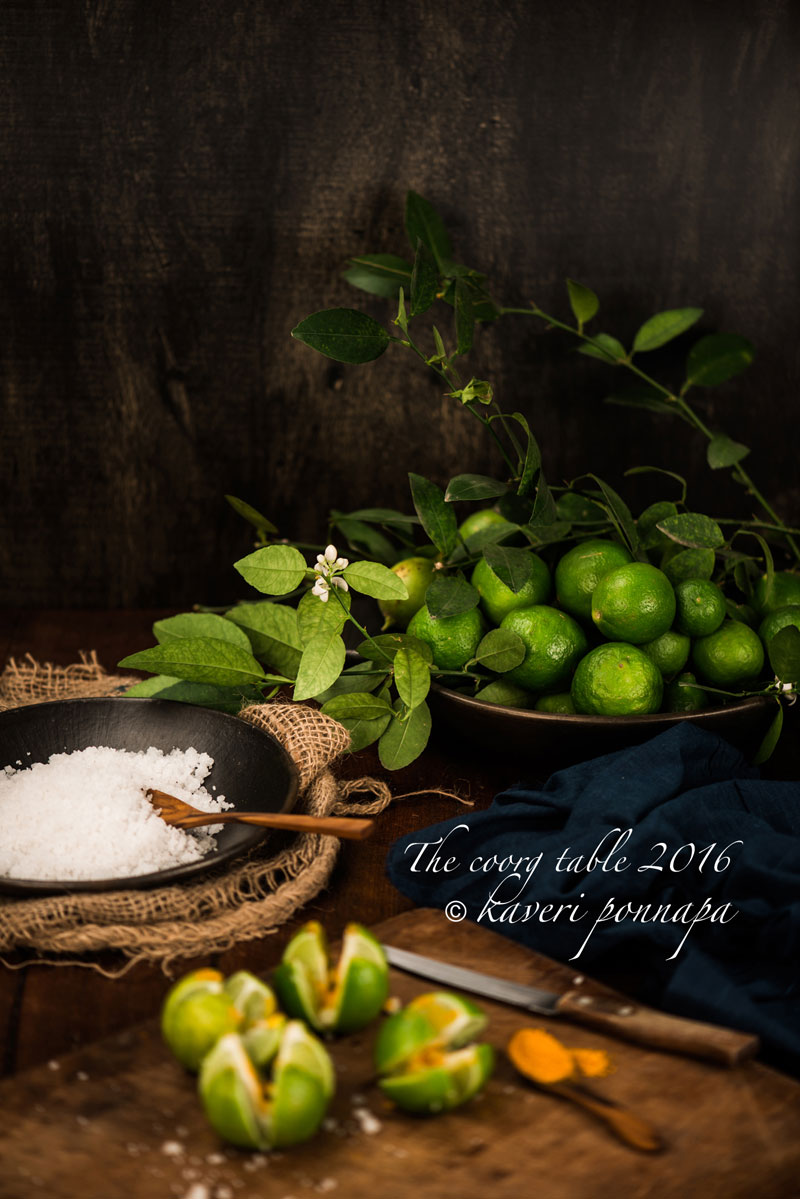
Citrus aurantifolia, known locally as chorenge, grows energetically, prolifically in Coorg, it’s beautiful waxy white flowers apologizing charmingly for the many sharp, snagging thorns that surround it. Sour and juicy, it is used generously in our kitchens and cooking and made into pickles and chutneys.
I always wondered about chorenge: it sounded so different from nimbuka, the root that forms the base of the name in so many other cultures. The erudite food historian K.T.Achaya traces the Sanskrit nimbuka to the far more ancient Munda term, numbaka and indicates that the fruit may have come to India from Malaysia. There are a host of other names to sift through as well: kaghazi nimbu in Hindi; limoo omani or loomi in Oman; limun baladi in Egypt, all from the Persian laimun, food historians tell us; nimbe hannu in Kannada: but none of them finds an echo in the Coorg chorenge. I finally tracked down someone who had an orchard of lime trees in Kerala and discovered that the fruit is known as cheria narangia, or ‘little oranges’. In Coorg, it appears that we have compressed the two words into one –the familiar chorenge –unless time reveals yet another layer of meaning to the name of this excellent fruit.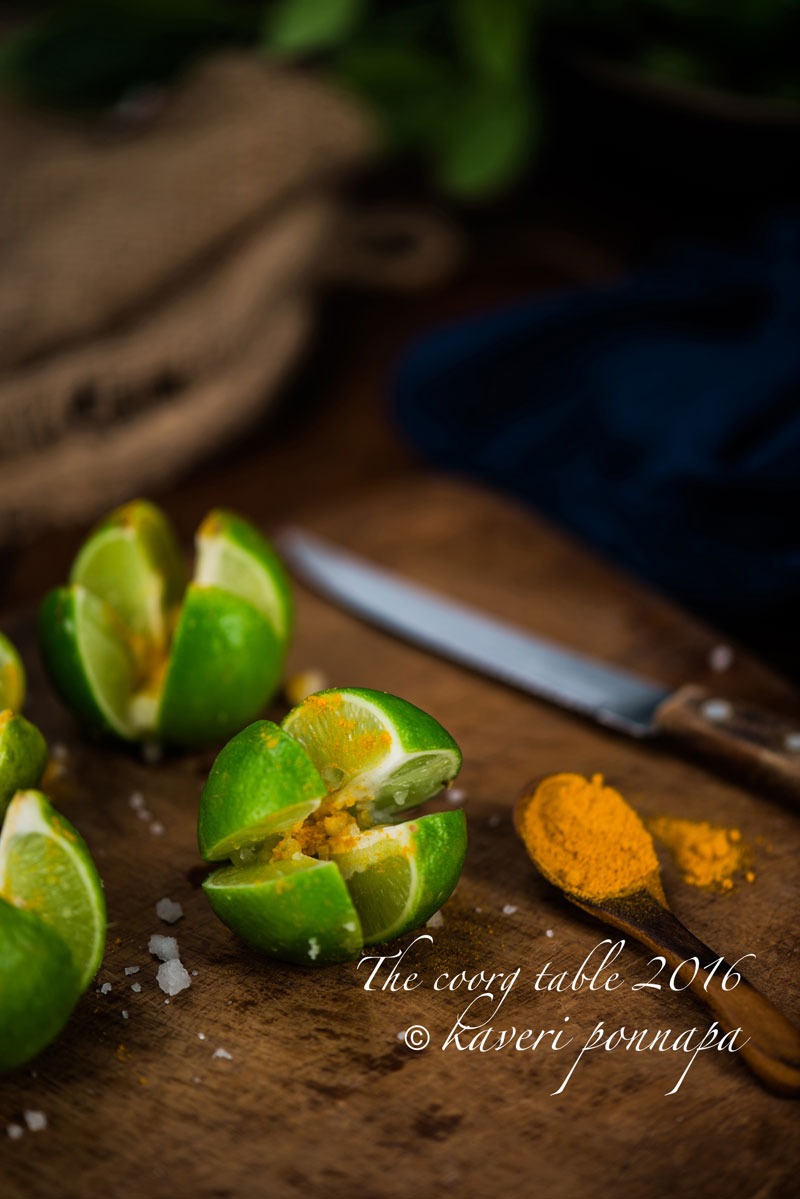 There’s hardly a Coorg household where you would not find a bottle of this homey pickle. It requires little effort to make it from scratch. You begin by simply quartering or slicing the limes, layering them with rock salt and squeezing them tightly into a jar. Quite a lot of the sharp acidity of the fruit is mellowed by a long soak in salt that turns to brine, softens the skin and releases delicious juices. It takes just three spices –dried paringe mollu –or red chillies of your choice, mustard seeds and turmeric, combined with a little garlic to turn the salted limes into a pickle of vivid and refreshing beauty. The acidity has been tamed, a very slight and pleasing natural bitterness lingers and if you have done your work well, the spices will not overwhelm the flavour of the lime but highlight it. It’s a clear, sharp taste that pleases anytime.
There’s hardly a Coorg household where you would not find a bottle of this homey pickle. It requires little effort to make it from scratch. You begin by simply quartering or slicing the limes, layering them with rock salt and squeezing them tightly into a jar. Quite a lot of the sharp acidity of the fruit is mellowed by a long soak in salt that turns to brine, softens the skin and releases delicious juices. It takes just three spices –dried paringe mollu –or red chillies of your choice, mustard seeds and turmeric, combined with a little garlic to turn the salted limes into a pickle of vivid and refreshing beauty. The acidity has been tamed, a very slight and pleasing natural bitterness lingers and if you have done your work well, the spices will not overwhelm the flavour of the lime but highlight it. It’s a clear, sharp taste that pleases anytime. 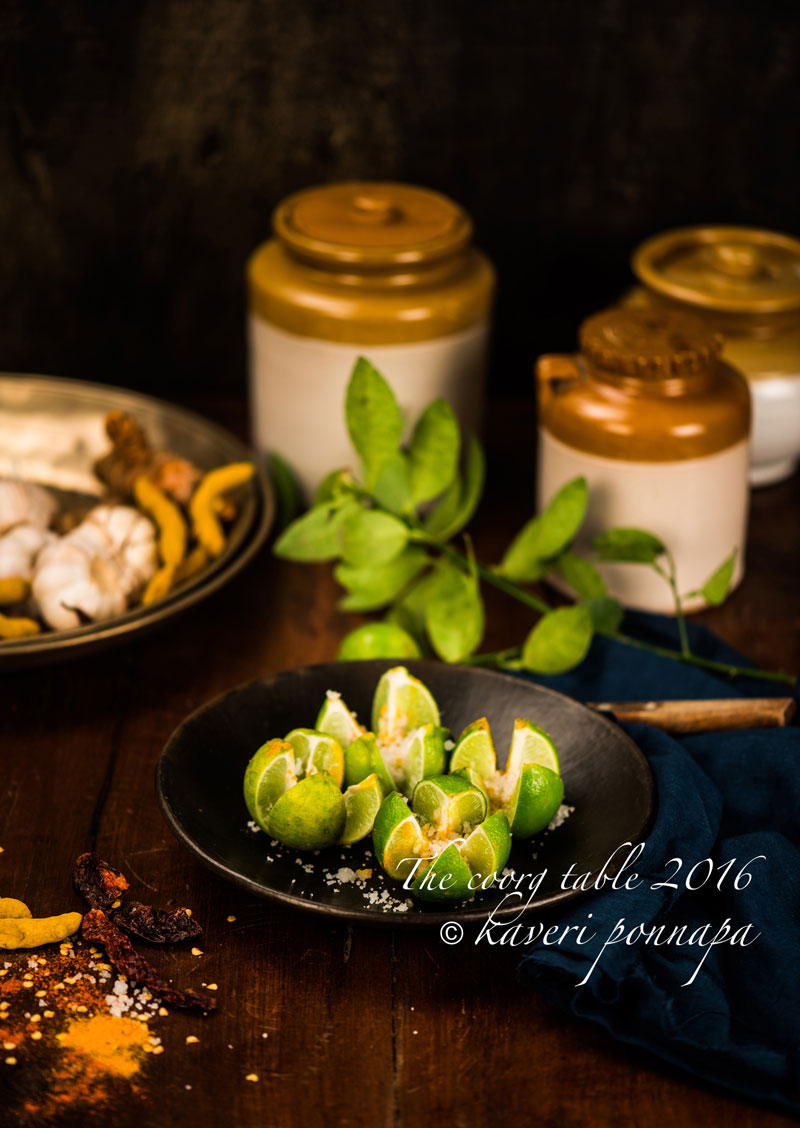
Ken Albala wrote of Indian lime pickle as ‘one of the most perfect foods on earth’ and even with the oil-free, somewhat austere Coorg version, I agree with him. The spice mixture blended with juice that coats the softened limes is rich, thick, or a little more liquid according to how you wish to make it, and the rind is delicious to chew with your food. You can add crunchy green peppercorns while pickling for that extra bite against the softness of the lime.
It took me quite a while to work out how to make this pickle to match the taste and texture I remembered from my childhood. Now that I have got it just right, I bring out a jar from time to time and linger over a little piece of lime, the sparkling flavours and citrus burst evoking a strong wave of affection for the fruits of the land.
Photo Credits: Nithin Sagi
All Food Styling: Kaveri Ponnapa
Thank you for visiting this page. If you read something that you enjoy, or see an image that you like, please take a moment to write a response. Do look out for the recipes of all the food featured here in my upcoming cookbook.
ALL MATERIAL ON THIS WEBSITE IS COPYRIGHTED: If you wish to use any of tHIS material, KINDLY WRITE TO THE AUTHOR FOR PERMISSION.

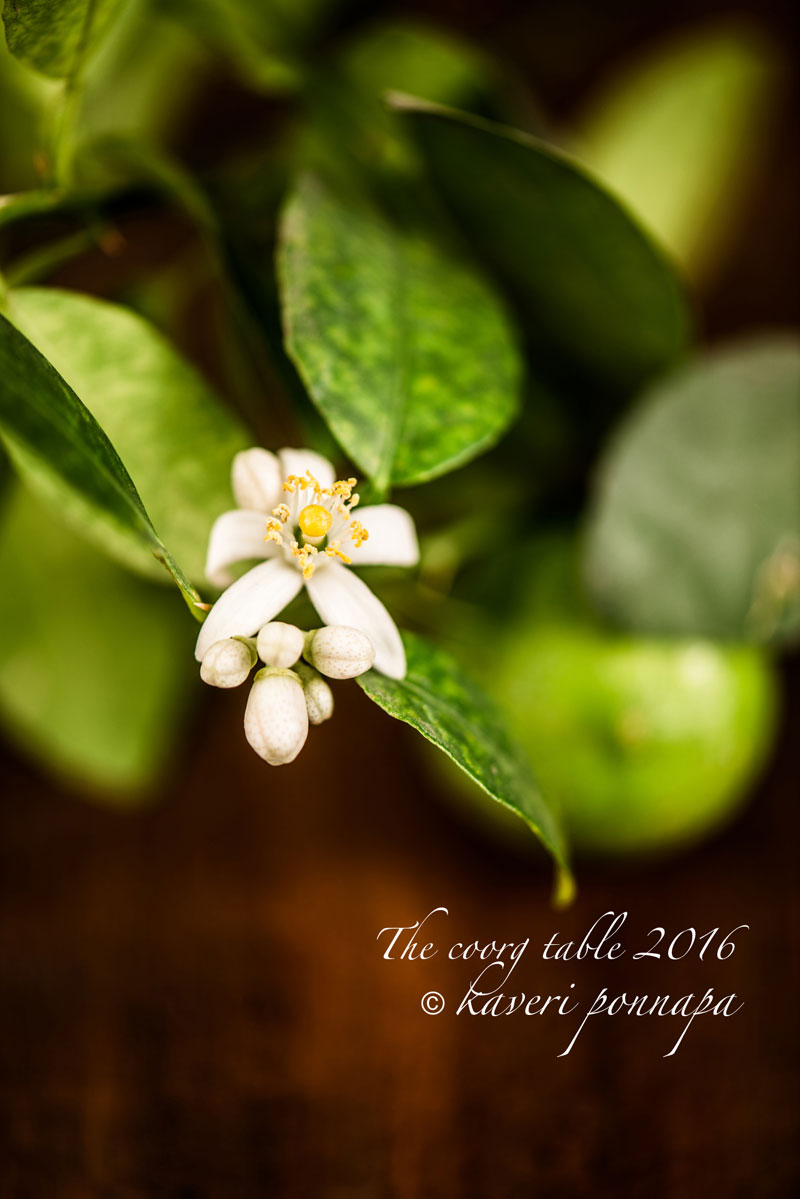


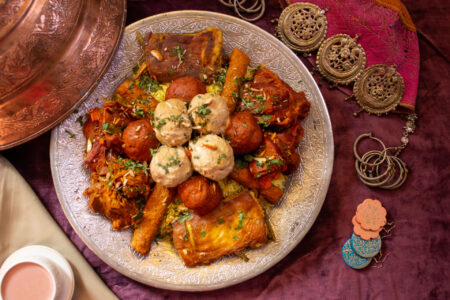
gosh what fabulous images .. Didn’t know that one could make lime pickle oil free, like a preserve. Will definitely try!
It’s very easy, Sonali, very refreshing and as you say, more like a preserve. Sometimes I just stop with the preserved limes, since citrus works for me any way. Of course, I’m the only one who eats them that way, but all the better! Do write to me for the recipe :kaverikamb@gmail.com Warm wishes. Kaveri
Chorenge paara for kanji kool is a perfect combination for me…I always like to have kanji kool with chorenge paara…As usual your narration and images are so nice and lively…
…and with mor kool (curd rice) too. Most delicious when packed for a journey, wrapped up in a banana leaf, so cool and refreshing, and that lovely piece of lime pickle to brighten up everything. Thank you for writing in! Warm wishes.Kaveri